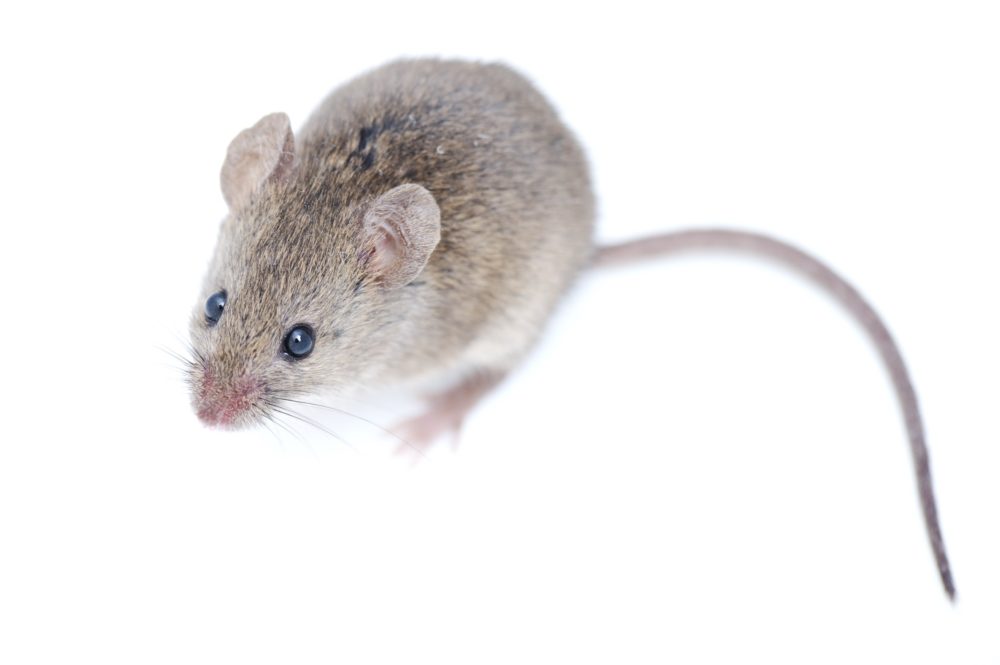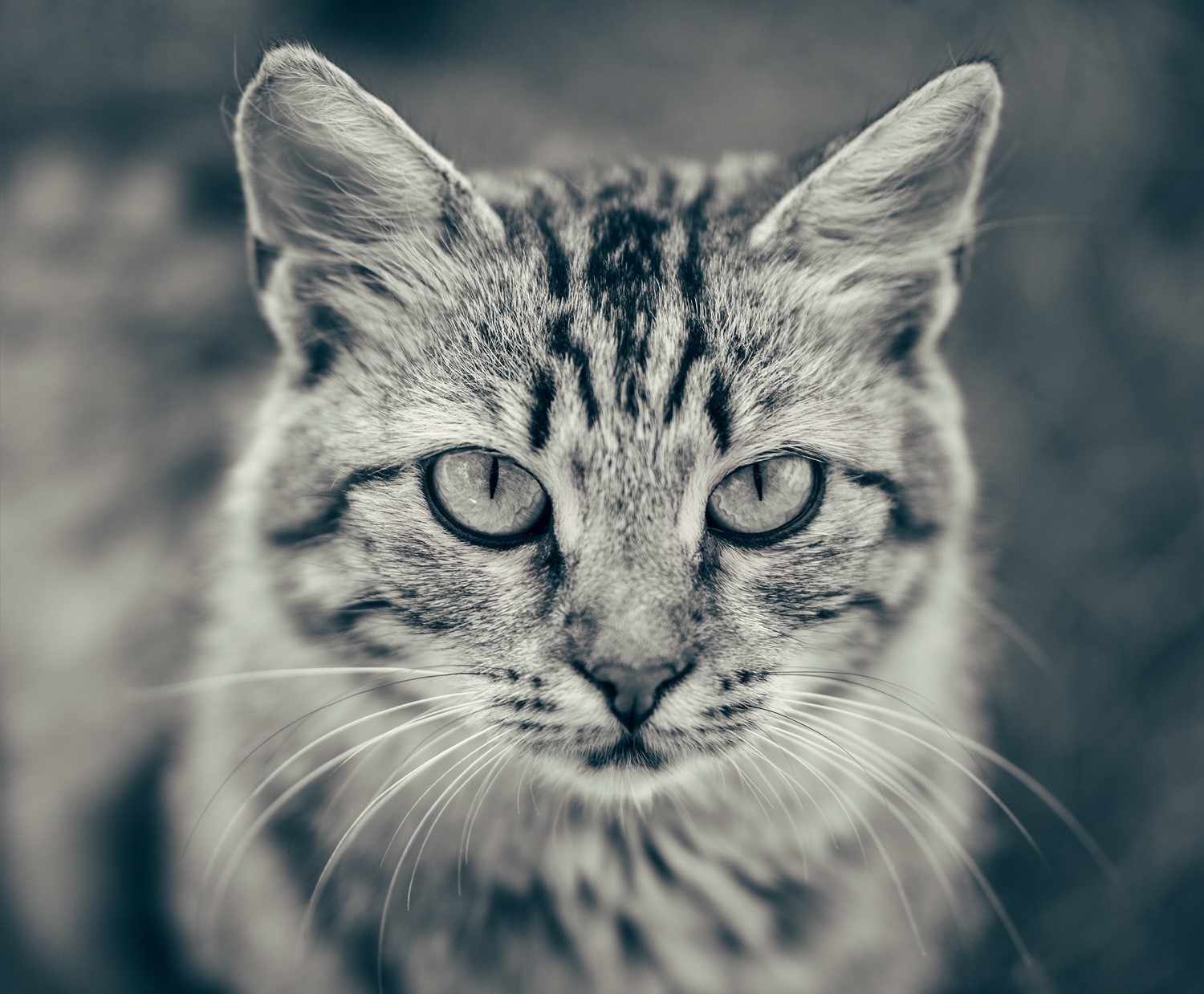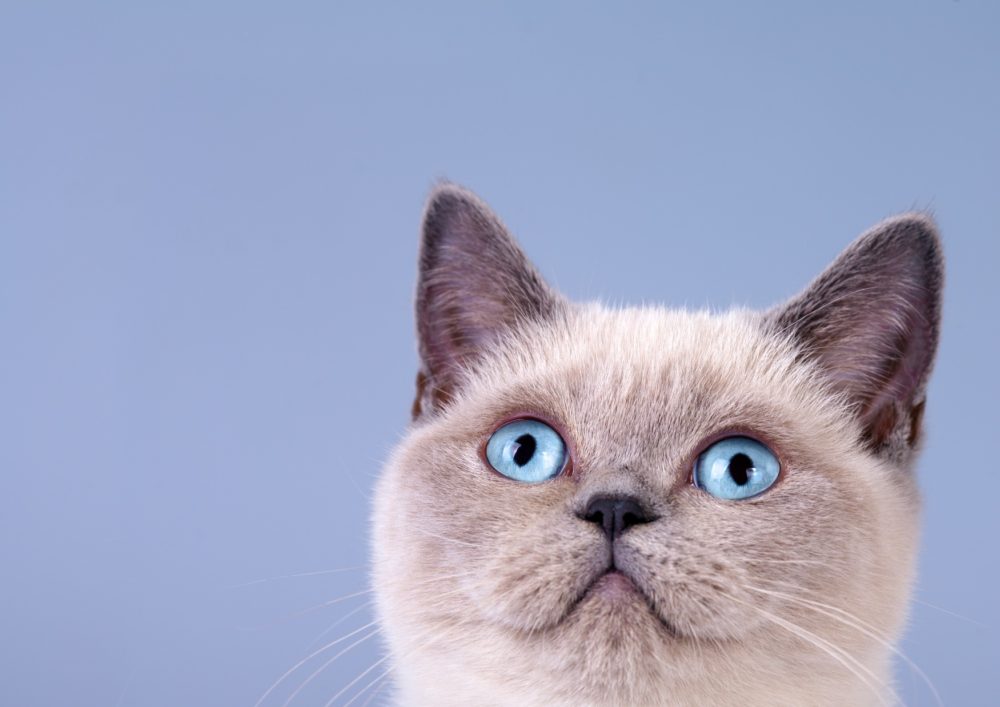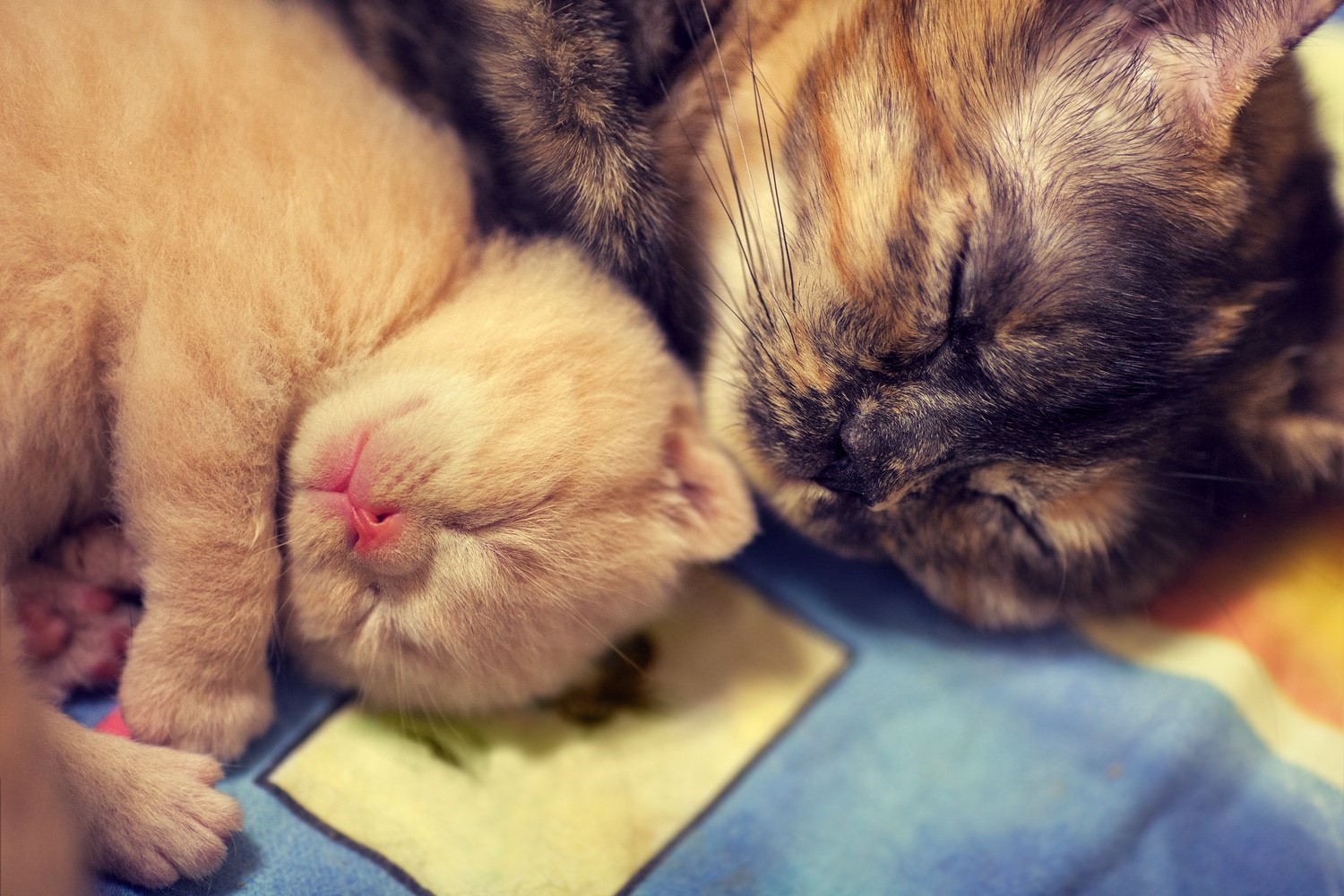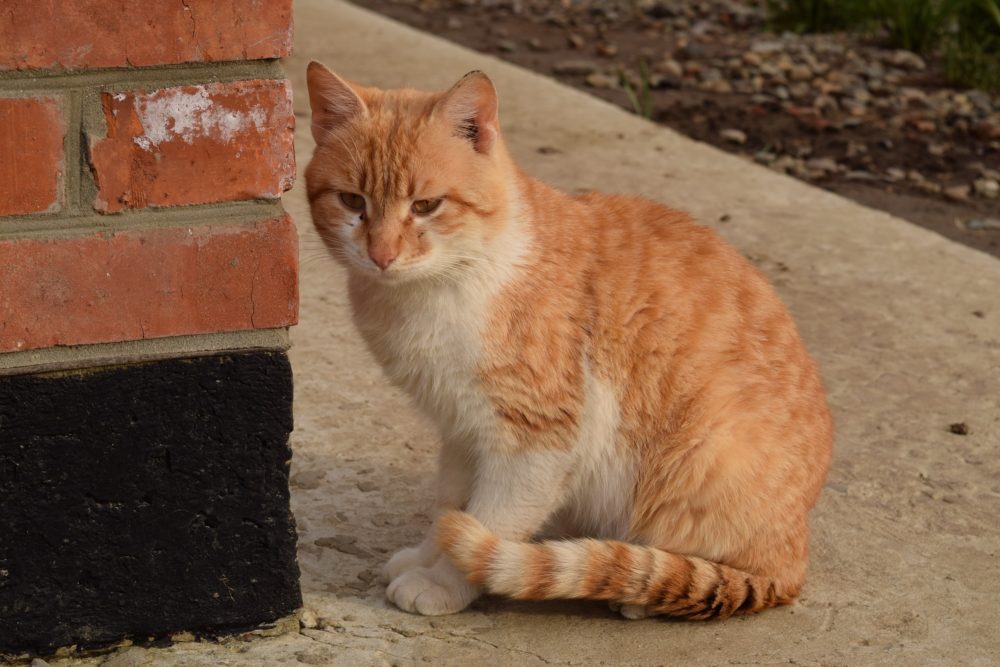
Why do cats have tails? Do cats like their tails stroked?
We love seeing our cats walking around at home, tails high up, coming up to us and rubbing against our legs. But surely there is more to a cat’s tail than this cute strut and tail swishing. A cat’s tail, often referred to as a fifth limb, has many important functions. The tail is a sensitive part of the cat and is very reactive. The tail of a cat is useful for the following roles:
- Communication
- Balance
- A sense of touch
- For safe landing
- For hunting
Tail for communication
Cat language is a combination of tail position, facial expression, vocal and scenting messages. Like in many other species, the tail will communicate quite clearly the emotion of your cat. A tail can quickly move from one position to another and sometimes it may be hard to decipher your cat’s emotion via their tail only. It can therefore be useful to learn other aspects of cat’s communication for clarification of your cat’s mood. (We have a whole article dedicated to ‘Cat communication’ which will provide further insight into understanding what your cat is trying to tell you).
A guide to tail communication is set out in the table below:
| If a cat’s tail is…… | Your cat is…… |
|---|---|
| Vertical | Happy and confident |
| Vertical with tip bent | Friendly |
| Straight down | Agitated, possible aggressive |
| Puffed | Scared, angry |
| Swinging from side to side in a slow, lazy motion | Relaxed and focused |
| Straight, almost level with the spine | Uneasy |
| Half raised tail | Uneasy or unhappy |
| Tucked below or between the legs | Insecure or submission |
| Thrashing in broad sweeps | Annoyed or fearful |
| Broad sweeps in a fast pace | About to attack |
Tail for balance
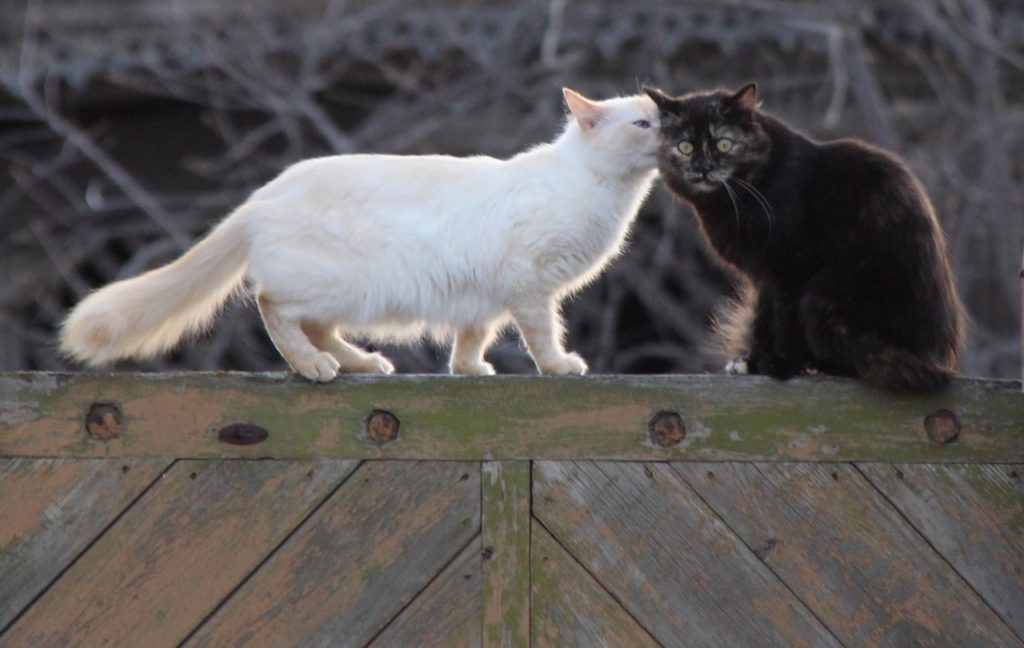 A key function for a cat’s tail is to maintain balance. Cats often walk along high, narrow surfaces and the tail acts as a counterweight. When your cat looks or sways to the right, the tail will move to the left. The tail also helps balance when the cat is running and makes sudden swerves and sharp turns.
A key function for a cat’s tail is to maintain balance. Cats often walk along high, narrow surfaces and the tail acts as a counterweight. When your cat looks or sways to the right, the tail will move to the left. The tail also helps balance when the cat is running and makes sudden swerves and sharp turns.
Tail as a sense of touch
A cat’s tail comprises of many, many nerves. There are motoric nerves which send information from the brain and spinal cord to the muscles, and there are sensory nerves. It is these sensory nerves that carry information form the external environment, such as hot, cold, wet, pain etc. to the brain. Hence the information picked up by the nerves in the tail by touch enables the cat to understand its surroundings.
A tail for a safe landing
Very similar to balance, the tail acts as a counterweight for a balanced landing and helps to ensure that the cat lands on her feet.
The tail as a hunting tool
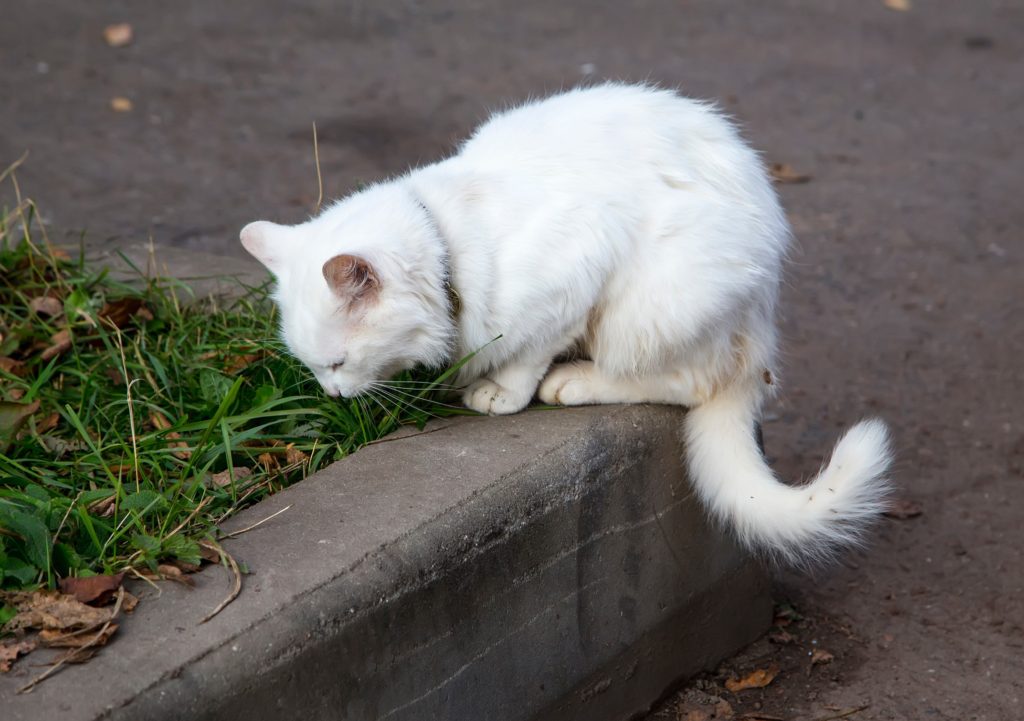 When hunting, a cat may swish his tail from side to side. The aim of this is to lull the prey into a hypnotic trance. A cat cannot see well close up (see out article ‘Can cats see close up’) and so if the prey has become still the cat will not be able to see it. Therefore, in hunter mode the cat will make small movements with its tail to encourage the prey to move so it can refocus on the victim’s position.
When hunting, a cat may swish his tail from side to side. The aim of this is to lull the prey into a hypnotic trance. A cat cannot see well close up (see out article ‘Can cats see close up’) and so if the prey has become still the cat will not be able to see it. Therefore, in hunter mode the cat will make small movements with its tail to encourage the prey to move so it can refocus on the victim’s position.
What is a cat’s tail made of?
A cat’s tail is made up of between 19 and 23 bones with many muscles, tendons and ligaments. The structure of these components enables the tail to make very fine, measured movements. The tail can move up and down, from side to side, be drawn in between the legs and adjust the tip of the tail. The average tail length is 9.9 inches for a female cat and 11 inches for a male cat. Generally, a cat’s tail will be the same length as it’s body.
Do cats like having their tails stroked?
Most cats do not like having their tails stroked. Focus your stroking on other areas such as under their chin, behind their ears, rubbing their neck & massaging their cheeks. These spots will have your cat purring with delight. If your cats tail begins to twitch or swaying whilst you are giving her some attention, then this is a sign that she’s had enough.
What if my cat’s tail is injured?
An injury to a cat’s tail can cause permanent damage. The muscle, tissues, tendons and bones in the tail are all critical to its function. A cat’s tail should never be stretched or pulled as this can cause tearing of the nerves which could also result in permanent damage. This could result in a cat being unable to walk properly, unable to control its tail, incontinence or result in long lasting pain.
If a tail has to be amputated for whatever reason, the cat will learn to adapt to a life without a tail. Sometimes incontinence is a lasting result of tail amputation, but this is certainly not the case for all cats. Cats are very adaptable, and many have lived happy lives following a tail amputation. The Manx breeds are born without a tail and still maintain happy lives doing “cat” things!
Why does my cat suck its tail?
Although this is very unusual, some cats do have a habit of sucking their tail. Occasionally, kittens will suck their tails as comfort and security. Some experts believe that this is more likely to occur in kittens that were orphaned or taken from their mother too young. Tail sucking will not harm the cat if it’s done occasionally. Monitor your kitten or cat’s behavior and if this behavior becomes extreme then please contact your veterinary for advice, as prolonged and excessive tail sucking can lead to some damage.
Why do cats chase their tails?
Although tail chasing is behavior more often seen in dogs, cats can do it too. It isn’t exactly a normal behavior, in that in the wild it isn’t something a cat would normally do. But it isn’t something to overly worry about if your cat does it occasionally. If tail chasing becomes a constant behavior for your cat, then it’s best to get it checked out by a veterinary. There could be an underlying medical or neurological problem.
The main reason a cat will chase its tail is for play and stimulation. Indoor cats in particular, need ample opportunities to hunt and catch prey. It may be that every now and then your cat has an abundance of stored energy and a crazy half hour chasing its tail will provide great fun and use up energy. To ensure your cat has plenty of stimulating play time check out our article ’18 games to play with your cat’ for some great ideas.
Why do some cats have a kink in their tail?
Some breeds of cat are born with kinked tails. This is particularly common in Siamese and Burmese cats. The kink in their tail doesn’t cause any discomfort or pain and doesn’t usually interfere with the normal functions of a tail. This kink in the tail is purely down to genetics although there is a beautiful mythical story of how the Siamese cat came to have a kink in its tail. Legend has it that the reason a Siamese’s cat has a kinked tail is that the princess of the Royal House of Siam would keep her rings safely on her cat’s tail while she bathed. Some say the cat would kink its tail to prevent the rings falling off, where others say that the princess tied a knot in the tail to stop the rings falling off.
Another reason for a kinked tail could be a past injury. If one of the bones in the tail is broken it may not heal properly and could result in a kink in the tail. If you suspect any injury or damage to your cat’s tail, please seek veterinary advice.
Why do some cats have no tail at all?
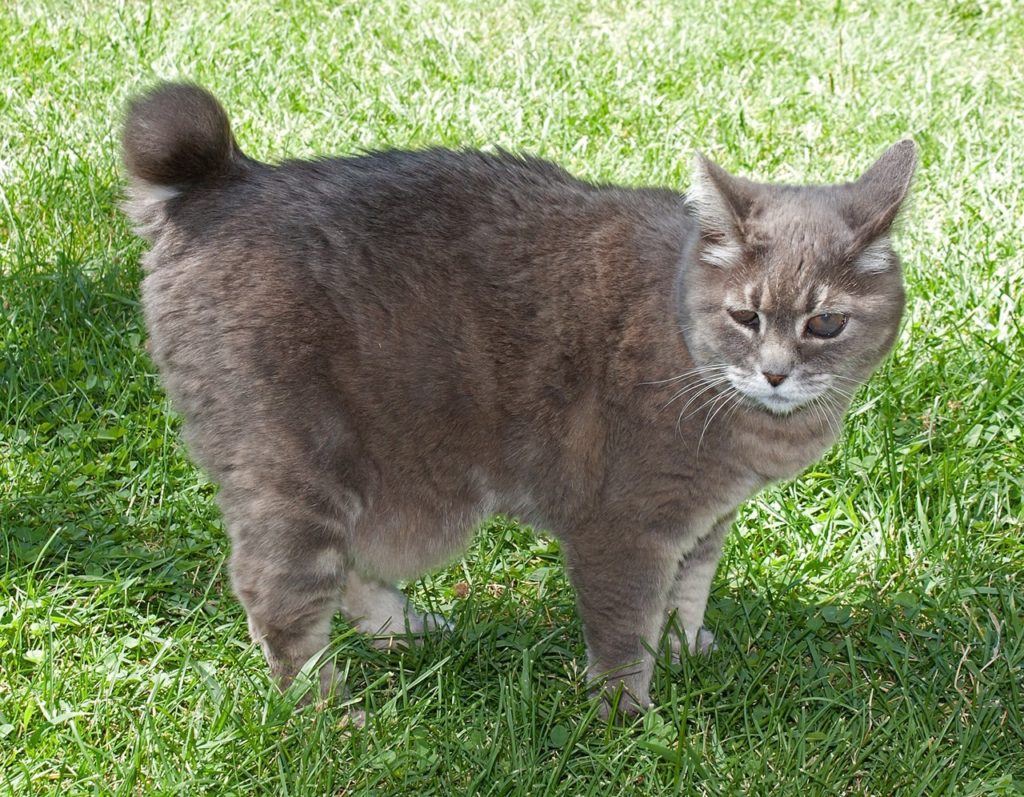
Originating on the Isle of Man, in the British Isles, the Manx breed of cats has no tail at all. Although some do have a small stub of tail. This is caused due to genetic mutation over the years. Having no tails doesn’t seem to cause any pain or stress on the Manx cats. To compensate for the lack of tail their back legs are longer than their front legs and are very muscular. This helps balancing and landing.
And finally,……..
The Guinness World record for the Longest tail on a domestic cat is a Maine Coon cat called Cygnus Regulus Powers, from Michigan, with a tail measuring a staggering 44.66 cms (17.58 inches).
If you’ve enjoyed this articles, you may find the following articles of interest too:
Why do cats have whiskers? And fun facts about cat’s whiskers!
Why do cats climb trees? How can I stop my cat climbing trees?
